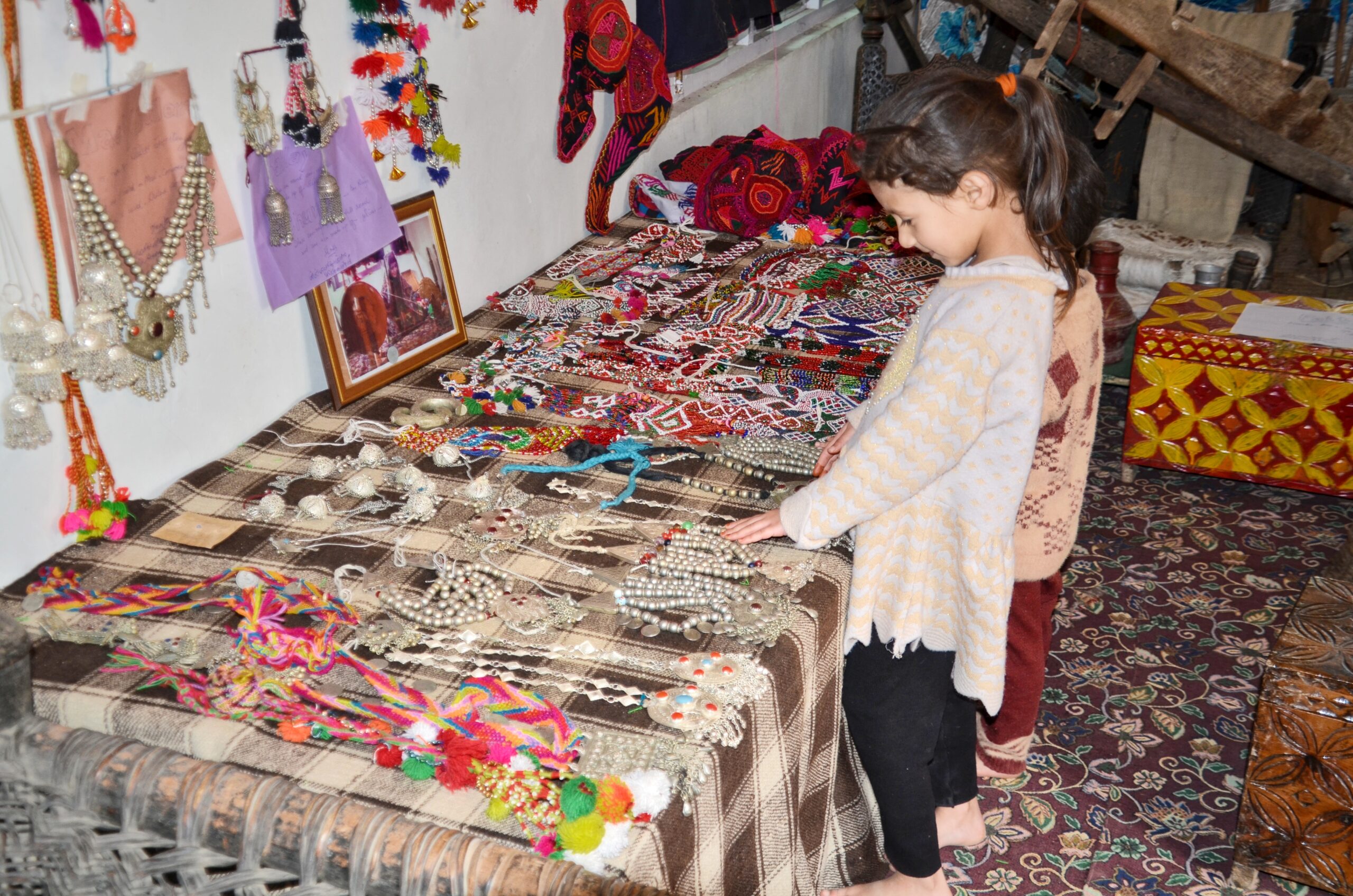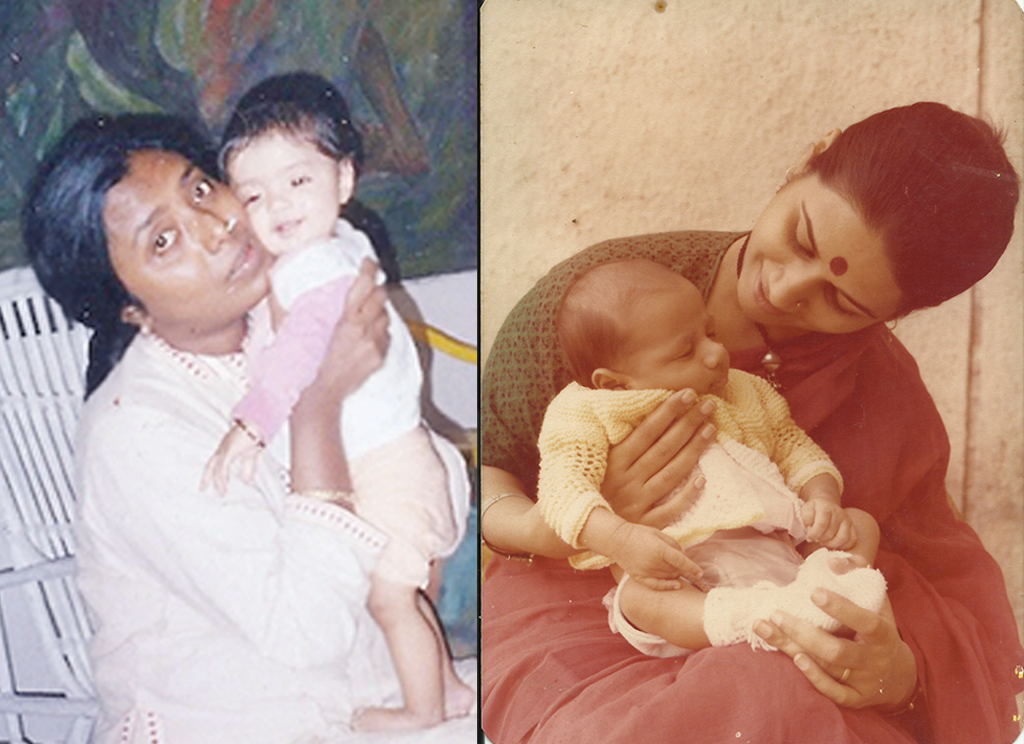Mask of Vaikuntha Vishnu, late 5th century. Learn more about 5th century masks
Designed by 



Look a Little Closer

This royal chhatri, or umbrella, features intricate patterns and textures that we also see on the attire worn by the prince and princess portrayed underneath it. Their traditional garments, including jamas, angarkhas, paijamas and dupattas, contribute to our knowledge of culture and fashion at the time.
The vibrant red of the tent’s fabric here reflects the expertise of South Asian dyeing communities who were pioneers when it came to fixing vivid and long-lasting colours to cloth. The red colour we see is likely the result of the use of natural dyes such as lac or madder.
The painting depicts a huntress making love to a courtier who simultaneously aims his arrow at a tiger. Testing the limits of pleasure as well as strength, hunting has served as a metaphor for political and martial power, and the motif of tigers being hunted features widely across South Asian art.
Soft pastel colours and depictions of figures in profile as we see here, characterise Pahari painting styles of Rajput kingdoms at Basohli, Kulu, Guler and Kangra. The patronage of these courts is especially known to have established the careers of master artists such as Nainsukh and Manaku. Miniature paintings from these courts have also inspired contemporary artists such as Nilima Sheikh.
In addition to the intimate depiction of the two lovers we see here, notions of adoration are conveyed across South Asian art in a variety of ways. Mughal and Rajput paintings, for instance, often depict lovers swooning at each other’s sight.
The panels of this hunting enclosure, or qamargah, divide the scene temporally and spatially. Opulent fabrics such as these, have been used historically to also construct regal tents and shamianas that served as administrative centres, spaces of respite, entertainment, shelter and privacy, outside of palatial walls. Sign up for our Online Course to learn more about the various forms and functions associated with textiles.
Pleasures of the Hunt, c. 1800, Ink, opaque watercolor, gold and silver on paper, Metropolitan Museum of Art, New York